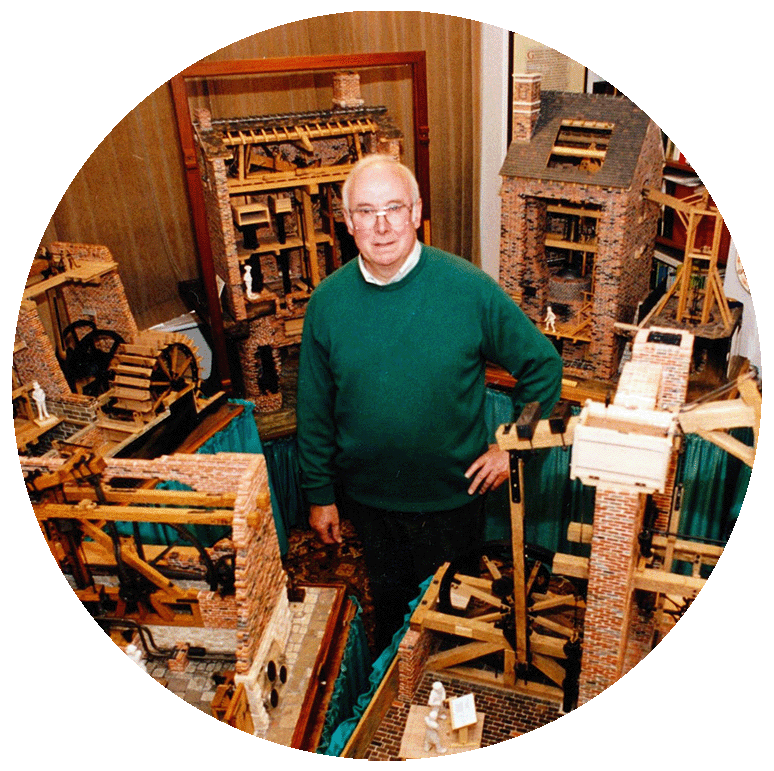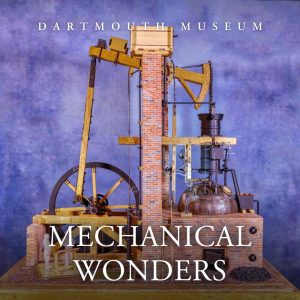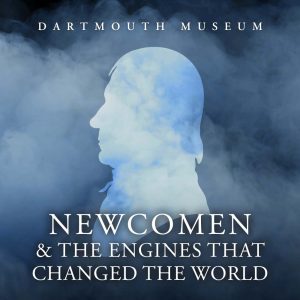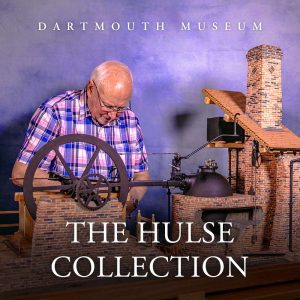Dartmouth Museum
Newcomen & The Engines That Changed The World
FEATURING THE WORLD-RENOWNED DAVID HULSE COLLECTION OF MODEL ATMOSPHERIC ENGINES
Welcome to Our New Exhibitions
Dartmouth Museum is excited to welcome visitors from far and wide to explore our new Exhibition Rooms detailing the story of Thomas Newcomen and the engines that changed the world, featuring the incredible collection of model atmospheric engines designed and built by David Hulse over a 50-year period.

The Story of Dartmouth Man, Thomas Newcomen
Thomas Newcomen is today hailed as the father of the steam engine – one of the world’s greatest inventors. An ironmonger by training, working with John Calley, a plumber and glazier, and inspired by the need for more effective pumping of the mines, he gave us the world’s first steam engine, the condensing ‘fire engine’ of 1712 from which we can trace in unbroken succession the development of the engines of today. Without this engine the great industrial developments of the 1700’s and the scientific progress in the ‘Age of Enlightenment’ would probably have been greatly delayed.
See the detailed model of his engine, and models of a hundred years of engines inspired by his engines.
See The Hulse Collection
“In 1970 I started a project which was to occupy all my spare time for the next 50 years. I have researched and constructed in miniature the important steam engines which were built in the eighteenth century.”

Explore David Hulse’s World-Renowned Collection
The David Hulse Collection comprises 8 miniature working models of steam engines chosen to show how Newcomen’s 1712 invention was adapted to improve efficiency and effectiveness right through the horizontal Trevithick engine of 1804 used in Cornwall to power the first locomotives in the world. The product of 50 years work and 6,000 hours each, the collection is known around the world for the quality of the modelling. They are testament not only to David’s extraordinary skills as a modelmaker, but also his profound scholarship and scrupulous research.
David has generously donated the collection to Dartmouth Museum where it will be on permanent display.
Explore Dartmouth’s World of Steam & Shipbuilding
See how steam power affected life in Dartmouth. From the first steam powered ‘Floating Bridge’ in 1831, through the arrival of the railway for transport of both tourists and goods in 1864, the growth and eventual decline of coal bunkering for long distance and coastal ships, to the arrival of the paddle steamers that are still to be seen on the Dart today. Learn about the hard and short lives of the Coal Lumpers fuelling the sea-going ships. Look at the local shipbuilding industry through the story of the engineers at Simpson Strickland who manufactured advanced steam engines and luxury launches at Noss in the late 19th century.
Watch Titles From This Exhibition
Dartmouth Museum is excited to welcome visitors from far and wide to explore our new Exhibition Rooms detailing the story of Thomas Newcomen and the engines that changed the world, featuring the incredible collection of model atmospheric engines designed and built by David Hulse over a 50-year period.
Dartmouth Museum
Visit Us
Why not come and see these Exhibitions in person!




